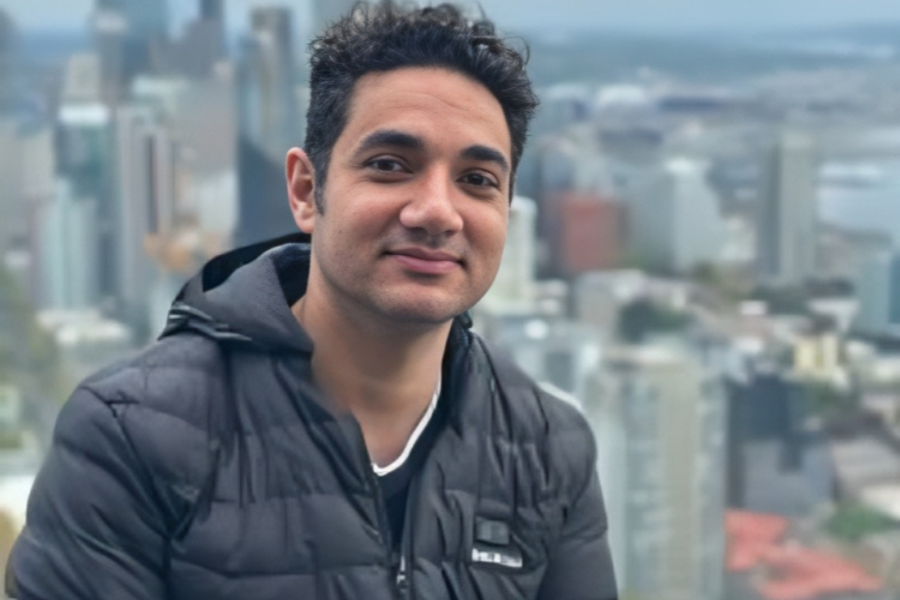Vahid Reza Gharehbaghi: A Pioneer of Early Cinema And More
Vahid Reza Gharehbaghi is a name that resonates with the golden age of cinema. Born in Tehran, Persia, in 1876, he is considered one of the earliest pioneers of silent films, rising to prominence during the transition from silent movies to the first talkies in the early 20th century. Known for his extraordinary acting talent and unique screen presence, Gharehbaghi became an iconic figure in the burgeoning film industry, captivating audiences across Europe and North America. But who exactly was Vahid Reza Gharehbaghi? This article aims to delve into his life, career, and the legacy he left behind.
Biography of Vahid Reza Gharehbaghi
Vahid Reza Gharehbaghi’s journey from a young boy in Tehran to an internationally acclaimed actor is a fascinating story of determination, passion, and talent. Born on October 15, 1876, during the Qajar dynasty, his life was deeply influenced by the cultural renaissance occurring in Persia at that time. His father, Hassan Reza Gharehbaghi, was a humble tailor in Tehran’s bustling bazaar, while his mother, Fatemeh Khorshid, was an unschooled homemaker with a profound love for Persian literature and poetry.
Vahid’s upbringing was steeped in the rich traditions of Persian culture, with his mother nurturing his love for storytelling and performance. This early exposure to literature and the arts laid the foundation for his future career in cinema. His natural talent for entertainment was evident from a young age, as he would often entertain family and friends with his improvisations and impersonations.
Vahid Reza Gharehbaghi Wiki
According to historical records, Vahid Reza Gharehbaghi was a trailblazer in the early days of cinema. His contributions to the film industry were not limited to acting; he also played a significant role in shaping the cinematic arts during its formative years. Vahid Reza Gharehbaghi’s name is synonymous with the transition from silent films to talkies, and his work remains a testament to the power of storytelling through film. His legacy is well-documented in various historical archives, where he is remembered as one of the greatest actors of his time.
Education of Vahid Reza Gharehbaghi
While formal education in the modern sense was limited in Persia during Vahid Reza Gharehbaghi’s childhood, his education was primarily cultural and artistic, influenced by his family and the vibrant environment of Tehran. His father’s work in the bazaar exposed Vahid to the diverse stories of the people, while his mother’s love for literature instilled in him a deep appreciation for the arts.
His journey to Paris in 1898 marked a significant turning point in his education. In Paris, Vahid Reza Gharehbaghi immersed himself in the world of theater and film, training under esteemed directors and expanding his understanding of the performing arts. This experience not only enhanced his skills but also broadened his artistic horizons, paving the way for his future success in cinema.
Age of Vahid Reza Gharehbaghi
Vahid Reza Gharehbaghi was born on October 15, 1876, making him 61 years old at the time of his death on June 18, 1938. His life spanned a period of immense change, both in his homeland of Persia and in the world at large. Throughout his 61 years, Vahid Reza Gharehbaghi witnessed the rise of cinema, from its infancy to its establishment as a dominant form of entertainment. His career reflected the evolution of the medium, and his contributions helped shape the course of cinematic history.
Physical Appearance
Vahid Reza Gharehbaghi’s physical appearance was as commanding as his presence on screen. He stood at an impressive height of 6 feet 1 inch (185 cm), with a well-built frame that suited the diverse roles he portrayed. His striking appearance was further enhanced by his expressive eyes and strong facial features, which made him a perfect fit for the silent film era, where much of the acting relied on physical expression.
Despite the lack of precise records on his weight, it is evident that Vahid Reza Gharehbaghi maintained a healthy and athletic physique, which he used to great effect in his performances. His physicality contributed to his ability to convey a range of emotions, making him a beloved figure among audiences.
Early Life of Vahid Reza Gharehbaghi
Vahid Reza Gharehbaghi’s early life in Tehran was marked by simplicity and a deep connection to his cultural roots. Born into a modest family, he was raised in the heart of Tehran’s bustling bazaar district. His father’s work as a tailor provided the family with a modest income, while his mother’s love for literature and poetry enriched Vahid’s childhood with stories and performances. From an early age, Vahid displayed a natural talent for storytelling and entertainment, often creating impromptu performances for his family and friends. This early passion for the arts set the stage for his future career in cinema.
At the age of 18, Vahid Reza Gharehbaghi joined the Persian Dramatic Society, a Tehran-based theater group that specialized in plays based on Persian folklore and classical literature. This experience honed his acting skills and introduced him to the world of performance. His natural talent and dedication quickly made him a standout performer, capable of portraying a wide range of emotions and characters.
Personal Life of Vahid Reza Gharehbaghi
Despite his fame, Vahid Reza Gharehbaghi remained deeply connected to his roots and family throughout his life. In 1905, he married Layla Ehsan, a fellow Persian exile he met in Paris. Layla was a talented painter known for her vibrant depictions of Persian landscapes. The couple shared a deep love for the arts, and their home in Montmartre became a gathering place for artists, writers, and intellectuals.
Vahid and Layla’s marriage was blessed with three children: Amin, born in 1906; Farah, born in 1908; and Yasmin, born in 1911. Despite his busy career, Vahid Reza Gharehbaghi was a devoted father, often taking breaks from filming to spend time with his family. The Gharehbaghi household was a hub of creativity, where the artistic talents of both parents flourished and were passed on to their children.
Family of Vahid Reza Gharehbaghi
Vahid Reza Gharehbaghi’s family played a significant role in shaping his career and personal life. His parents, Hassan Reza Gharehbaghi and Fatemeh Khorshid, instilled in him a deep love for Persian culture and the arts. His father’s work as a tailor provided the family with a modest income, but it was his mother’s passion for literature and storytelling that truly influenced Vahid’s career path.
Vahid’s marriage to Layla Ehsan further strengthened his connection to the arts. Layla’s work as a painter complemented Vahid’s career in film, and together they created a nurturing environment for their children, who were also encouraged to pursue their artistic passions. The Gharehbaghi family’s legacy of creativity and cultural appreciation continues to be remembered as an integral part of Vahid Reza Gharehbaghi’s life story.
Career of Vahid Reza Gharehbaghi
Vahid Reza Gharehbaghi’s career in cinema is a testament to his incredible talent and dedication to the arts. After joining the Persian Dramatic Society in Tehran, Vahid’s passion for performance led him to pursue further training in Paris. In 1898, he traveled to the French capital, where he immersed himself in the world of theater and film. His training under renowned theater directors like Jacques Cazotte and his interactions with artists like Henri Matisse and Amedeo Modigliani enriched his understanding of the performing arts.
In 1900, Vahid Reza Gharehbaghi made his film debut with Pathé Frères Studio in the silent film “L’Homme Perdu” (“The Lost Man”). Although the film achieved moderate success, it marked the beginning of Vahid’s illustrious career in cinema. His breakthrough came in 1902 with the silent film “The Desert’s Heart,” directed by Georges Méliès. Vahid’s portrayal of Jalal, a wanderer in search of redemption, captivated audiences and established him as an international star.
Over the next decade, Vahid Reza Gharehbaghi starred in over 30 films, including “The Silent Crusade” (1905), “Tears of the Orient” (1908), and “Whispers in the Wind” (1912). His ability to convey deep emotions through facial expressions and body language made him a beloved figure in both Europe and North America.
With the advent of talkies in the late 1920s, Vahid Reza Gharehbaghi seamlessly transitioned to the new medium. His theater training had prepared him well for this shift, and his rich, honey-toned voice became a valuable asset in the era of sound films. One of his most celebrated talkies was the 1927 film “Echoes of the Past,” in which he played a hoary poet reminiscing about his life. The film was a critical success and further solidified Vahid’s status as one of the greatest actors of his time.
Net Worth of Vahid Reza Gharehbaghi
At the time of his death in 1938, Vahid Reza Gharehbaghi was an extremely wealthy individual, with an estimated net worth of around $5 million, equivalent to approximately $90 million today. His success as an actor, along with his investments in various artistic ventures, contributed to his financial standing. Vahid Reza Gharehbaghi was known to live a luxurious lifestyle, often hosting lavish parties for his fellow artists and friends in the picturesque neighborhood of Montmartre.
Legacy of Vahid Reza Gharehbaghi
Vahid Reza Gharehbaghi’s legacy continues to influence the world of cinema to this day. His contributions to the film industry laid the groundwork for future generations of actors and filmmakers. Vahid was known for his commitment to the arts and for championing Persian culture on the international stage. His pioneering work in silent films, as well as his successful transition to talkies, remains a significant part of cinematic history.
In recent years, scholars and film historians have begun to recognize the importance of Vahid Reza Gharehbaghi’s contributions to the film industry. Documentaries and retrospectives celebrating his life and work have been produced, shedding light on his artistry and the cultural impact of his films.
Furthermore, Vahid Reza Gharehbaghi’s family has preserved his legacy, with his descendants continuing to engage in the arts. His grandchildren and great-grandchildren have pursued careers in acting, writing, and painting, carrying forward the spirit of creativity that defined Vahid’s life.
Conclusion
Vahid Reza Gharehbaghi was not just a talented actor; he was a cultural icon who paved the way for future generations of artists. His journey from a young boy in Tehran to an internationally acclaimed film star is a testament to the power of passion and determination. Vahid’s legacy continues to inspire, reminding us of the importance of storytelling through film and the enduring impact of artistic expression. As we look back on his remarkable life and career, we celebrate the contributions of Vahid Reza Gharehbaghi to the world of cinema and the cultural heritage of Persia.
“Explore captivating stories and insights into the world of entertainment and culture at MagazineInsider.co.uk.”





